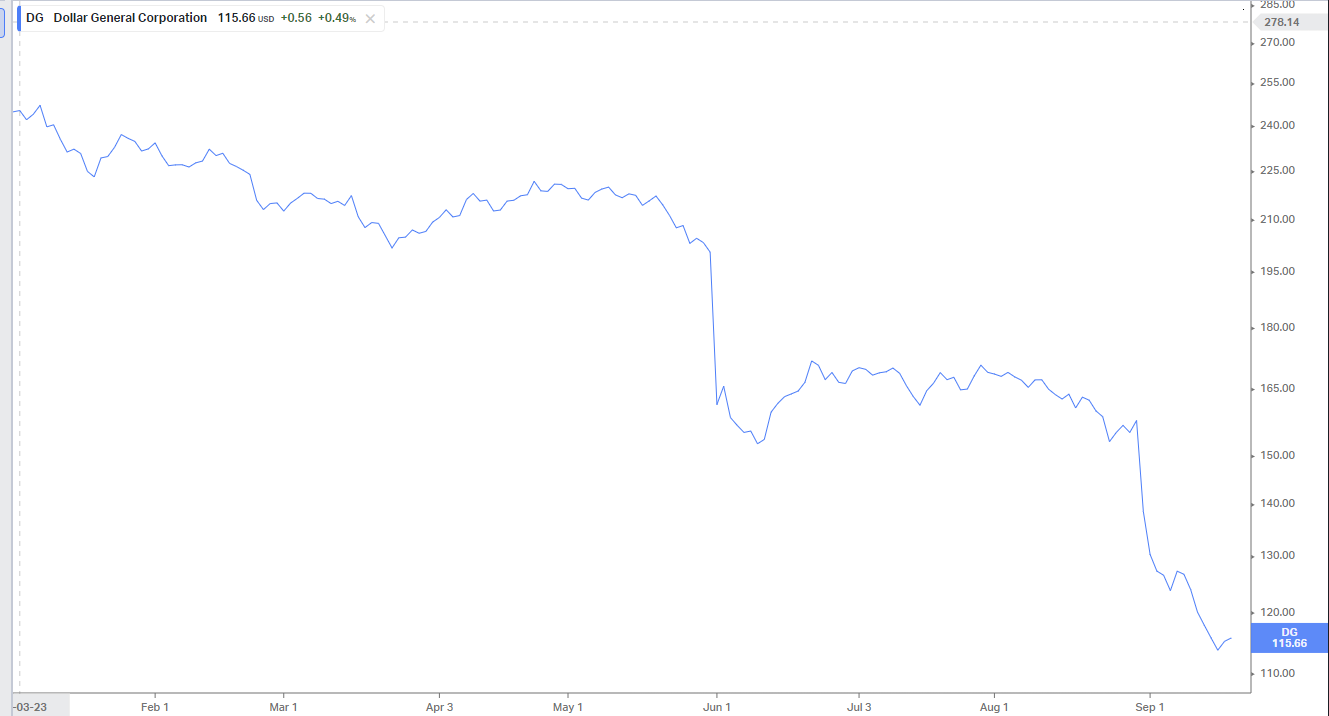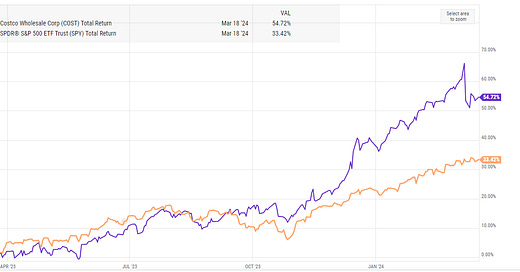
Last year, I put up the first in what I thought would be a semi-annual series I titled “trite Buffett quotes that hit me.” As mentioned in that post, the background for the series was:
One of the things I absolutely hate about Warren Buffett is that he has a ton of quotes that I’ll hear and think “o that’s obvious; how trite”…. and then a few years later I’ll stumble on something and Buffett’s quote will click for me and I’ll think “Gosh darn it; there was so much wisdom in that one damn quote. How does he keep doing this?”
Anyway, I think one of the keys to investing is being a learning machine. I’m trying to be one; I certainly feel like I’ve learned a ton over the past 18 months (and, in a very meta way, I’m always looking to learn ways to “learn better”; let me know if you have any advice there)! As part of that learning process, I find once or twice a year I’ll have a Buffett quote that really clicks for me and I’ll internalize something new. So I’m starting a semi-annual series where I’ll take a Warren Buffett quote that really clicked for me for something I learned in the half-year.
It turns out starting a semi-annual series is hard! Every now and then I’d think to myself “hey, I should probably check to see if I’m due to post something on that series,” but it kind of slipped my mind and suddenly here we are ~15 months later and I haven’t done the second in the series.
But I wanted to bring the series back because #1) it’s a great premise for a series and #2) there’s one particular idea that’s been percolating in my head a bit that I wanted to write about, and Buffett had a great quote for it.
So I’m bringing the series back, and hopefully will be able to keep it going when the new year rolls around!
The quote? Beware of geeks bearing formulas.
In that instance, Buffett was using the quote to describe the subprime mortgage crisis, but I believe he first used the quote around Long Term Capital Management’s failure. I could be wrong; a closer Buffett follower than me can correct me in the comments if I am.
Anyway, I said in the intro one of the sneaky things with Buffett quotes is there are often hidden layers of meanings to them, or you’ll wake up one day and the quote will apply to a new situation you hadn’t thought of before. As I write that sentence, it strikes me that there are a lot of people who follow / watch / worship Buffett and Berkshire like a religion, and gaining new insight / inspiration from older quotes by applying them to new situations is kind of core to a lot of religion.
So, at the risk of joining the cult, what new insight or meaning am I getting from “beware of geek bearing formulas?”
I talk to a lot of investors. One of the things that I think separates the best investors I talk to from the “also rans” is how inferior investors become attracted to “spreadsheet math.” Inferior investors spend a lot of time in excel, and when you spend a lot of time in excel you tend to invest in things that work really well in excel, and your answer to most questions you get asked about a business will tend to focus on the spreadsheet math, not a fundamental understanding of the business.
What are the things that work best in excel? In general, the things that work best in excel are restaurants or retailers with good unit economics that have a lot of room to expand their store base. These businesses work incredibly well in a spreadsheet; if you have a company with 100 boxes that could grow to 1000 boxes, you can easily model in double digit growth for years and years and years without seeming too crazy. That growth will likely be reasonably capital light (assuming the company is leasing, not buying, their stores), so you can underwrite the stock to generate incredible returns from just about any starting point. A 100x P/E today looks pretty cheap five or seven or ten years down the line if the company is going to quadruple their store base and expand margins!
That’s not to say this type of strategy can’t work! You could have paid through the nose to buy Walmart or Home Depot in the 70/80s, and you still would have made incredible returns. And, if I remember correctly, I believe Peter Lynch mentioned a similar strategy in one up on Wall Street as it relates to restaurants in growth mode(i.e. if Taco Bell has 100 stores throughout California and Arizona and they’re doing well, it’s reasonable to think they could expand throughout the country and model out what the company looked like if they had 2,000 boxes nationwide doing returns similar to their California stores). There’s a reason that these businesses work so well in a spreadsheet; when they do work, they work out as incredible compounders.
So, yes, these can work and work really well…. but what I find these investors get attracted to is making a portfolio of companies that they are underwriting to be the next Walmart or Chipotle. They’ll have 20 names in their book, and 18 of them will be retailers/restaurants that are trading for ~50x EPS, and when you ask them about any of those companies the answer to every question will be “I model 10% unit growth and MSD SSS sales for the next decade years; add that growth with a little bit of operating leverage and I have them at 20x seven year out EPS. Given they’ll still have huge room to grow, I think they should be worth 40x, so I get to a >20% IRR over an almost decade long holding period.”
Again, one of those can work…. but I doubt you can successfully find and buy 18 of the next Walmarts on the stock market at any point in time, and that modelling leaves very little margin of error for things to go wrong.
A nice example of this attraction is Dollar General (DG). Today, everyone hates DG; the stock has more than been cut in half this year, and Bloomberg just ran a piece calling it “the worst retail job in America” and noting all sorts off frankly insane stories (my favorite being the company refusing to deal with a bird infestation at a store and requiring employees to take home and wash pillows that the birds had pooped on).

But, before everyone hated it, DG was an insanely popular compounder stock. At the start of the year, DG traded for ~$250/share versus a forward EPS number of just over $11/share. You can find all sorts of bull thesis online that said, “sure, >20x EPS isn’t cheap, but the company is a structural winner with margin expansion potential and the opportunity to massively grow their store base. Combine some same store sales growth with the margin expansion and a conservative estimate that they can increase their store count by ~5%/year plus some buybacks, and they could easily do $20/share in EPS in a few years. At that point, they’d still be growing attractively, so this could easily get a 20x multiple or be worth $400/share.”
Again, that sounds crazy now, but it was a popular pitch. For example, here’s a VIC pitch from May of this year making almost word for word the same pitch I just laid out (when the stock was just over $200/share), and here’s another VIC pitch from 2021 making that exact same case (when the stock was also just over $200!).
There are several popular retailer and restaurant names today that trade for similar valuations to where DG traded at the start of the year that I would not be surprised to see run into a similar DG “cut in half when the business stalls out” fate.
I am by no means immune to this “spreadsheet math” attraction, so let me call myself out / use myself as a further example lest you think I’m trying to target people specifically***. I don’t do much in restaurants or retail (though I did have two large losers in 2022 that were retail stocks; perhaps the reason I avoid them!), but the second best “thing that works well in a spreadsheet” is probably levered financial engineering stocks. Long time readers will know that I love the cable stocks. I know I’m not alone in this, and I think the reason a lot of financially sophisticated people are attracted to cable is that you can model unbelievable compound returns on them through financial engineering / by plugging them into a spreadsheet. For example, Charter (CHTR) should grow earnings ~MSD (or better) through a combination of household growth, pricing power, and operating leverage; combine MSD earnings growth with a commitment to using buybacks to hold leverage constant at 4.5x EBITDA, and you can model in some wild equity returns over the medium to long run (From today’s prices, I could easily paint you a 25% 10 year IRR on those assumptions, though it gets a little reflexive on how rapidly they can buy back shares and what price. I do not believe that’s the case; I’m only giving you an example of how wild a spreadsheet can get with the right assumptions).
There’s nothing wrong with that belief or theory… but, in hindsight, I took it too far in 2021/2022, and I did so in two ways. First, I just held on to these for too long; in 2021, most of the cable stocks raced to levels that I probably thought were fair or even overvalued, but because I could look at a model and say I could still generate solid IRRs over a long time period from those levels I held my stocks even though my model assumed that everything went my way to hit those IRRs (if you use the “risk riding” premise I put out a few weeks ago, in 2021 the risk of overbuild / competition for cable was priced at almost nothing and the stocks were quire dear; by the end of 2022 the risk was priced like every market would get immediately overbuilt by multiple players, and the stocks reflected that). Second, I started to drift into lower quality names; I had always avoided Altice on an asset and management concern thesis, but as Altice’s stock noticeably lagged peers and they bought back an enormous amount of shares, I bought the stock despite some operational concerns. That proved to be a huge mistake (and my “Altice is the ‘best’ large cap stock” article will always haunt me and humble me; please feel free to mock me endlessly for it or just shoot it to me if you think my head is getting too big); Altice was noticeably cheaper than peers in part because Altice was significantly more levered than peers, and when the market turned on cable stocks Altice took a serious amount of pain…. which they then added to with a series of management blunders.
Speaking of Altice, that’s another thing that I think “inferior” investors do that the best investors don’t: inferior investors always buy the cheaper second fiddle instead of the market leader. I’m not saying buying the cheaper player can’t work, but if you always buy the cheaper, worse run company versus its better run peer (i.e. you can buy Citigroup instead of JPMorgan if you’re really convinced you’ve got some differentiated insight, but if you’re buying Citi over JPM and Altice over Charter and AMCX over NFLX and Sears over Walmart and Under Armour over Nike…..), you’re probably too reliant on spreadsheet math and not really thinking through quality.
Anyway, what do the best investors do? Well, every investor has a different style, but the best investors I talk to generally spend less time in spreadsheets, and more time thinking about the underlying business. When I ask them questions, their answer isn’t always exclusively math based. A lot of times I can tell the difference from an investor who really understands a business and an also ran by how they answer a qualitative question; an also ran will answer almost every question with a reference to their “model” like an excel spreadsheet produces some magic understanding of the business, while someone who really understands the business will generally only refer to their model in response to specific quantitative questions. For example, if I ask an investor about pricing and they say “I model in a 2% price increase for next year….” I mean, that’s fine, but a really good investor would probably respond “I think they’ll be able to take pricing because they are currently pricing cheaper than competitor X and Y and the consumer value proposition is actually improving.” The difference between model dependence versus understanding a business is especially noticeable in the out years; good investors generally don’t talk about things further than a year or two down the line by using a model; instead, they’re usually talking from first principles about why the business has a structural advantage, why it will continue to grow and get more valuable over time, etc.
I think the difference is also most noticeable in how good and bad investors think about investments. Worse investors tend to just focus on numbers (“it’s trading for 10x my estimate of next year’s cash flow!”); I’m not saying good investors don’t like to look at multiples, but good investors tend to spend much more time focusing in some way on their variant perception versus the market (“the market is pricing this as a no growth commodity business: I think this is a rapidly emerging high moat subscription business”). Again, that’s a little simplification; at some point everyone is going to talk about the math and multiples, but I just think better investors spend more time talking about qualitative and variant views while worse investors can really only point to spreadsheet math (note that a special exception to this is when you go deep value; if you’re buying something for under 5x cash flow, in general you are making a bet on the terminal value of the business or management not doing something really stupid with the money or there’s some type of massive cyclicality you’re dealing with. I’m not saying you don’t need to understand the business / management to make that bet, but once the multiple gets low enough an investment becomes much more binary around those numbers or a cycle).
So my trite quote for H1’23 is beware of geeks bearing spreadsheets. Yes, I know Buffett meant it to apply to quants who take on huge amounts of leverage without realizing the risk they’re taking, but I’m applying it to investors who aren’t as good as they think they are who are armed with detailed excel spreedsheets and a belief that five hours in a spreadsheet is all the work you need to outperform. In general, I find they’re the ones who are buying the laggards and underperforming the market (and I often slap myself into that category), or paying huge multiples to buy every growth-y retail and restaurant concept they can find. Don’t be like them; instead, spend more time thinking about the underlying business and how you might view that business differently than the market.
***I’m happy to use myself as an example; I have tons of flaws as an investor and I’m always trying to work on them. But one of the funny things about writing a blog is that whenever I vaguely criticize something, I’ll get a dozen emails from people asking “are you talking about me?” when I wasn’t thinking of them and a dozen emails from people saying “damn those investors are so dumb LOLz” when the author of that email is exactly who I was thinking of! So if you think this email is criticizing “you,” Carly Simon would like a word because this post is probably not about you (but you should analyze why you think the email is criticizing you!), and if you think the email isn’t criticizing you, then…… well it’s still probably not, but maybe!














Thanks for the article. Thought provoking. This Buffett quote also reminds me of his admonition to "delight the customer." In businesses where the customer experience matters -- retail, cable, restaurant, consumer -- I won't touch any company that my wife thinks poorly of. Why? She's a decent barometer of the average customer. And no matter how good the spreadsheet math is, if the customer isn't happy then the business won't last. Buffett seems to do well with stocks/businesses where he likes the product (Coke, Sees Candy, or in the case of Apple, where he saw how much his grandkids loved the product) and then he applies back-of-the-envelope math to be directionally correct if not precise about the company's earning power. I also think wealthy investors -- who are likely out of touch with what poor people really think about the retail/product experience (e.g., Eddie Lampert and Sears, or anybody pitching DG) -- ought to be extremely reticent to trust spreadsheets if they don't shop at that store or use the actual product. All of this reminds me of the popular meme with the bell curve: the idiot investor buys a stock just because he likes the product, the average investor buys the stock because of the spreadsheet math, and the genius buys the stock because he likes the product (and the rough math works).
I really enjoyed this article Andrew, thank you for writing it.